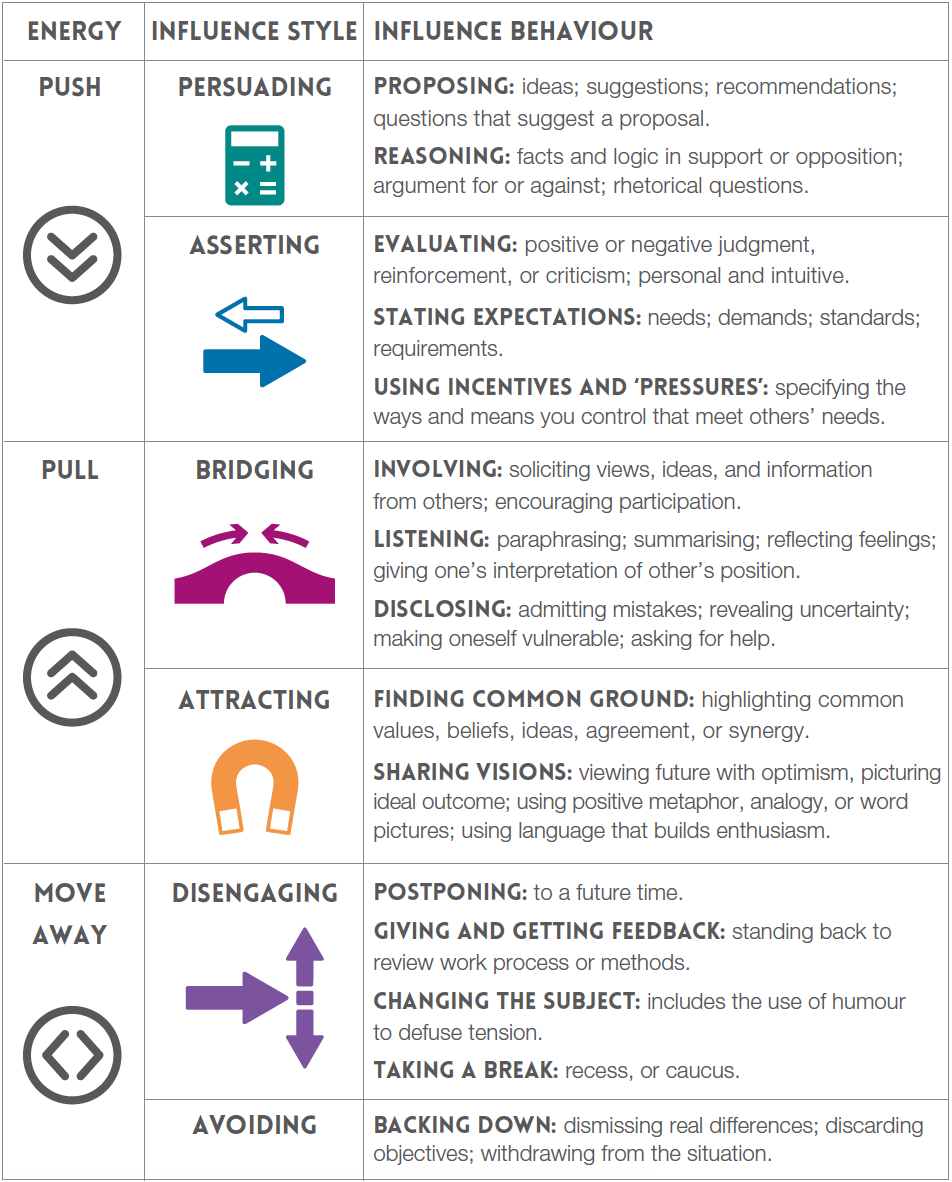
The Situational Influence Model
The Situational Influence Model describes influence behaviours and allows us to analyse and understand our use of influence.
All of the Styles are, in themselves, neutral, but each Style will be more or less effective depending on the situation you are trying to influence.
To become a truly effective influencer you must be able to choose the best Style for any situation, and use that Style skilfully.
There are three layers to the Situational Influence Model:
Energy
In order to be influential you must have Energy. Energy is the potential power (positional and personal) that you bring to bear on any situation.
In order to influence effectively you need to have an Influence Objective and use your Energy to achieve it.
You can use your Energy in three ways: Push, Pull, and Move Away.
Push Energy is used when you move another person towards your Influence Objective. It’s about what you, the influencer, think and feel, and what you want. It’s about expressing that to another person in a way that shapes their subsequent behaviour.
When used well, people may refer to you as dynamic, someone who drives things forward. If you overuse Push Energy, or use it badly, or in the wrong situations, others may feel backed into a corner. They may describe you as ‘pushy’.
Pull Energy is when you work with the other person to draw them towards your Influence Objective. It’s about focusing on other people and what they need, want, or expect of you. Whilst you may not agree with them, you genuinely want to understand what they are thinking and feeling.
When used well, people may feel drawn to you and to want to work with you. If you overuse Pull Energy, or use it badly or in the wrong situations, others may start to feel ‘sucked in’ or manipulated.
Moving Away Energy is when you take your Energy out of a situation.
If you take your energy out of a situation tactically and temporarily, it will be seen as constructive. If you do it unconsciously or as a way of abandoning your Influence Objective, it will be perceived as unproductive.
Style
- A Style is the culture or climate created by the Behaviours within that Style.
- Within Push Energy there are two Styles: Persuading and Asserting
- Within Pull Energy there are two Styles: Bridging and Attracting
- There are two ways of Moving Away: Disengaging and Avoiding
Behaviour
- Each Influence Style is made up of discrete Behaviours.
- Behaviours are what you say and do. They are seen and felt by others.
- When you use the Behaviours within a Style well, and with intent, you are more likely to be influential and have the impact that you intend.
- A key element of using a particular Behaviour well is the ability to use the language of that Behaviour. We refer to these throughout the Programme as Style Stems.
Energy and Style
